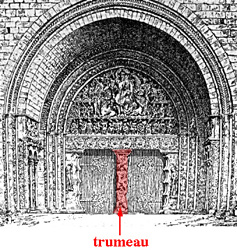Humanities Countdown to Test - 3 weeks. Better get crackin'
THEATER
Dumb Show: A part of a play, especially in medieval and Renaissance drama, that is enacted without speaking.Communication or acting by means of expressive gestures; pantomime.
Greek "Rule of five acts"
1. Only 3 actors
2 Economy
3 Time, place and action must have unity
4 No mingling of the tragic and comic "kinds";
5 No artificial dénouement (conclusions to the plot)
DANCE
Martha Graham used Isamm Noguchi's ballet sets
Ballet positions

  Susan Jaffe demonstrating first arabesque. | Arabesque [a-ra-BESK]  One of the basic poses in One of the basic poses in  ballet, arabesque takes its ballet, arabesque takes its  name from a form of Moorish name from a form of Moorish  ornament. In ballet it is a ornament. In ballet it is a  position of the body, in position of the body, in  profile, supported on one leg, profile, supported on one leg,  which can be straight or which can be straight or  demi-plié, with the demi-plié, with the  other leg extended behind and other leg extended behind and  at right angles to it, and the at right angles to it, and the  arms held in various harmonious arms held in various harmonious positions creating the longest positions creating the longest  possible line from the possible line from the  fingertips to the toes. The fingertips to the toes. The  shoulders must be held square shoulders must be held square  to the line of direction. The to the line of direction. The  forms of arabesque are varied forms of arabesque are varied  to infinity. The to infinity. The  Cecchetti method uses five Cecchetti method uses five  principal principal  arabesques; the Russian School arabesques; the Russian School  (Vaganova), four; and the (Vaganova), four; and the  French School, two. Arabesques French School, two. Arabesques  are generally used to conclude are generally used to conclude  a phrase of steps, both in the a phrase of steps, both in the  slow movements of adagio and slow movements of adagio and  the brisk, gay movements of the brisk, gay movements of allégro. allégro. |
The great chain of being or scala naturae is a classical and western medieval conception of the order of the universe, whose chief characteristic is a strict hierarchical system.
Utilized in Shakespeare's writings
Thales - 6c - The world began with water. Before Thales things were explain as products of the gods.
Thales - First father of western philosophy
Leucippus and Democritus - atomism - matter consists of atoms.
Zeno 4c - Paradoxes, Plurality and motion does not exist.
Parmenides 5c-4c - Metaphysics and there's no time, no motion
Heraclitus - 4c - everything is always changing and in a continuous state of flux
Socrates didn't write anything. Plato wrote the Dialogues about universal truths and forms.
Aristotle 3c - systems and logic
Hamartia (Ancient Greek: ἁμαρτία) is a term developed by Aristotle in his work Poetics. The term can simply be seen as a character’s flaw or error.
LITERATURE
John Donne (pronounced like done; 1572 – 31 March 1631) was an English Jacobean poet, preacher and a major representative of the metaphysical poets of the period. His works are notable for their realistic and sensual style and include sonnets, love poetry, religious poems, Latin translations, epigrams, elegies, songs, satires and sermons. His poetry is noted for its vibrancy of language and inventiveness of metaphor, especially as compared to those of his contemporaries.
Waiting for Godot is a play by Samuel Beckett, in which two characters wait for someone named Godot, who never arrives. Godot's absence, as well as numerous other aspects of the play, have led to many different interpretations since the play's premiere. Voted "the most significant English language play of the 20th century", Waiting for Godot is Beckett's translation of his own original French version, En attendant Godot, and is subtitled (in English only) "a tragicomedy in two acts". The original French text was composed between1948-10-09 and 1949-01-29. The premiere was on 5 January 1953 in the Théâtre de Babylone with Roger Blin as the director who also played Pozzo.
SHAKESPEARE'S "Dark Lady"
Sonnets 127-152 are addressed to a woman commonly known as the 'Dark Lady' because her hair is said to be black and her skin dun. These sonnets are explicitly sexual in character, in contrast to those written to the "Fair Youth". It is implied that the speaker of the sonnets and the Lady had a passionate affair, but that she was unfaithful, perhaps with the "Fair Youth". The poet self-deprecatingly describes himself as balding and middle-aged at the time of writing.
POETRY
Villanelle - 5 three line stanzas, followed by a 4 line stanza
Slant Rhyme - approximate rhyme
Masculine Rhyme - one syllable words
Feminine Rhyme - two or more syllables
Iambic pentameter - 10 syllables of rising and falling stresses - utilized by Shakespeare and Milton
Assonance - eyes like sapphires shining bright ( "I" sound)
Consonance - repetition of consonant sounds - counter, original, spare, strange ("R" sound)
ARCHITECTURE
Louis Sullivan - Skyscrapers - Form follows function.
Filippo Brunelleschi (1377 – April 15, 1446) was one of the foremost architects and engineers of the Italian Renaissance. All of his principal works are in Florence, Italy
Had to build a dome bigger than Rome's Pantheon for the Florence cathedral without buttresses which were forbidden by the church.
trumeau : Medieval architecture term
Vertical architectural member between the leaves of a doorway. Trumeaus were often highly decorated with human and animal forms.
See also: jamb,trumeau figure.

St. Pierre, Moissac, France
Early twelfth century
 | |
 | |
 |
There are also two other types of classical orders, the Tuscan and the Composite. The Tuscan order is very plain, with a plain shaft, a simple capital and base, and a plain frieze. The Composite order is a combination of the Ionic and Corinthian orders.
Jazz
Charlie Parker - "The Bird" saxophonist
John Coltrane - "Giant Steps" saxophonist


No comments:
Post a Comment